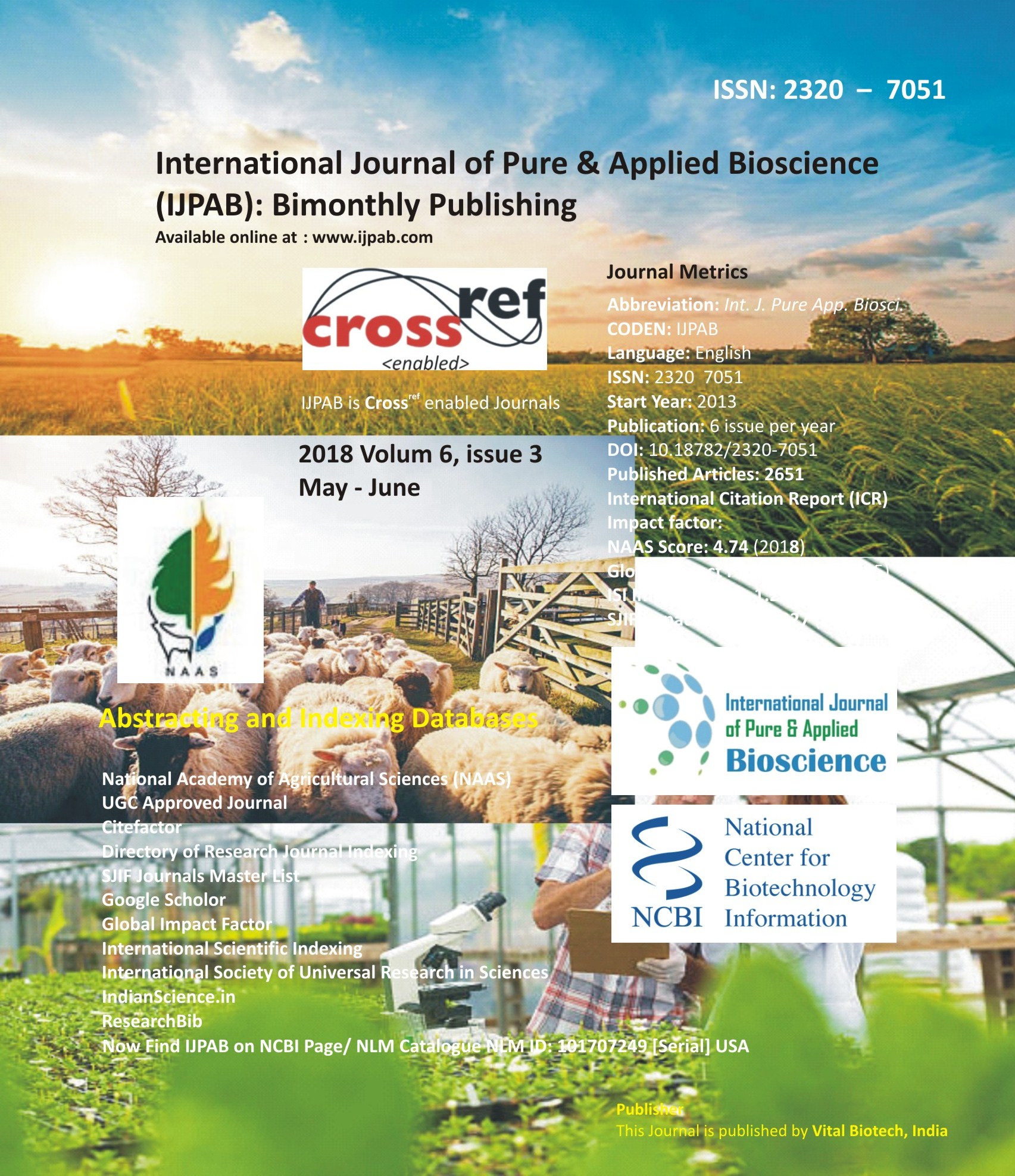
-
No. 772, Basant Vihar, Kota
Rajasthan-324009 India
-
Call Us On
+91 9784677044
-
Mail Us @
editor@ijpab.com
International Journal of Pure & Applied Bioscience (IJPAB)
Year : 2018, Volume : 6, Issue : 3
First page : (587) Last page : (596)
Article doi: : http://dx.doi.org/10.18782/2320-6734
Seasonal Fluctuations in the Microbial Composition of Mulberry Rhizosphere in Various Regions under Temperate Climatic Conditions of Kashmir
Saima Khursheed* and M. R. Mir
Temperate Sericulture Research Institute, Mirgund, SKUAST-K, Post Box 674, GPO-Srinagar Kashmir J&K.
*Corresponding Author E-mail: saimaiftikhar0485@gmail.com
Received: 18.05.2018 | Revised: 22.06.2018 | Accepted: 28.06.2018
ABSTRACT
Mulberry (Morus sps.) a perennial heterozygous plant can be grown in diverse climatic conditions and mulberry leaf has been found to contribute 38% towards the success of silkworm rearing, the maximum among all factors. Mulberry plant should get better inputs because there is higher production of biomass as against other tree species. The only source of nutrients for mulberry tree seems to be from microbial decomposition of organic matter. Soil microflora plays a pivotal role in evaluation of soil conditions and in stimulating plant growth, development and foliage production. The present study reveals the influence of different seasons on the microflora of mulberry soils under temperate climatic conditions in different regions of Kashmir valleyduring 2014-2015 and the results showed that the variations in the population of microflora were found to be maximum during Spring season which showed a decline towards the Winter season. Amongst the regions, northern region registered the maximum population oftotal bacteria, fungi and Azotobacter whereas, it was central region in case of Azospirillum, phosphorus solubilizing bacteria and Actinomycetes and the lowest values were registered in central region in case of totalbacteria and southern region in case of fungi, Azotobacter, Azospirillum, phosphorus solubilizing bacteria and Actinomycetes. The subsequent decrease in microbial population from spring to winter and the variations among the regions may be because of fluctuations in organic matter, temperature, moisture content, pH and available nitrogen in soil which suppress microbial activity during these seasons and in the particular regions.
Key words: Kashmir, Mulberry, Microflora, Rhizosphere, Regions, Season, Temperate.
Full Text : PDF; Journal doi : http://dx.doi.org/10.18782
Cite this article: Khursheed, S. and Mir, M.R., Seasonal Fluctuations in the Microbial Composition of Mulberry Rhizosphere in Various regions under Temperate Climatic Conditions of Kashmir., Int. J. Pure App. Biosci.6(3): 587-596 (2018). doi: http://dx.doi.org/10.18782/2320-7051.6734

